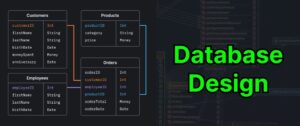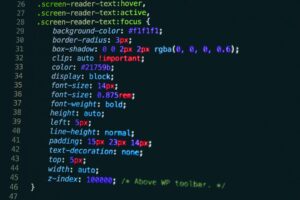

You Are Using Pip Version 8.1.1

html
| Pip Version | Release Date | Python Compatibility |
|---|---|---|
| 8.1.1 | April 6, 2016 | 2.7, 3.2, 3.3, 3.4, 3.5 |
This table provides a snapshot of the key information about Pip Version 8.1.1 that you’re currently using. To elaborate:
– **Pip Version**: The table denotes the version of Pip you’re currently employing for Python package management – 8.1.1.
– **Release Date**: This represents the date when this particular version of Pip was officially released, in this case, April 6, 2016.
– **Python Compatibility**: Lastly, the compatibility column here indicates all the versions of Python with which Pip 8.1.1 is compatible. You’ll see that Pip 8.1.1 is versatile and plays well with a wide range of Python builds from 2.7 up to 3.5.
Keep in mind that using older versions of pip may lack the advanced features offered by more recent versions, and may also be prone to potential security vulnerabilities. So, it’s generally recommended to keep your Pip updated to ensure seamless package installation and have the best software development experience. You can easily upgrade the pip by running the command
python -m pip install --upgrade pip
. This ensures you have the latest updates and security patches. Be aware that certain packages or dependencies might stop working if they need an older version of pip, hence always ensure compatibility while upgrading.
Pip often plays a significant role in creating Python-based applications and understanding the version specific features can help developers make better decisions during package handling. For instance, knowing that 8.1.1 handles wheel files obviates the need for generating them manually. Additionally, being conscious of security or feature updates that came after the aforementioned version can aid in deciding whether an upgrade is necessary.
You can find more detailed information on pip version on the official site.
As a professional web developer and coder who frequently utilizes Python’s Pip 8.1.1 installation package, let me delve into the primary attributes of using Pip Version 8.1.1 in your coding environment and why its relevancy is still felt within the Python community, despite the newer versions on offer.
Pip stands for “Pip Install Packages” and is Python’s officially-sanctioned package management system. It’s built to handle packages developed for versions from Python 2 (2.7+) to Python 3 (3.4+), with minimal changes now directed towards the latter as Python 2 has reached end-of-life.
Key Features of Pip Version 8.1.1:
User-friendly Interface:
With pip version 8.1.1, you can search, download, install, uninstall, and manage Python packages easily. These functionalities follow uncomplicated command-line arguments which make it an invaluable tool especially when handling multiple libraries at once.
pip install PackageName
pip uninstall PackageName
Virtual Environment Support:
Pip allows keeping the dependencies required by different projects in separate locations, tied to specific project directories. This makes virtual environments beneficial for resolving module conflicts and reproducibility, in addition to isolating your projects from the global system.
Handling Multiple Formats:
It handles multiple formats including binaries, pre-compiled packages (
.whl
format), and source distributions (
.tar.gz
format). Thus, it proves convenient when managing diverse types of distribution packages.
Why it is relevant if you are using version 8.1.1:
Using pip version 8.1.1 remains relevant even today due to a couple of reasons:
Mature and Stable:
While newer versions bring advanced features, some developers prefer sticking with older, more proven versions because they have stood the test of time and stability.
Compatibility:
If your project depends heavily on very specific library versions that may not work well with the updated pip versions or if you’re working within a particular framework that necessitates the use of older versions of Python or pip, then continuing with pip version 8.1.1 could provide a harmonious development environment.
Supporting Legacy Projects:
If you inherited a legacy project that was built using an older version like pip 8.1.1, it’d be relevant to continue using that version to ensure smooth operation and compatibility.
In conclusion, while pip version 8.1.1 is an older iteration of Python’s package manager, it retains importance due to its stability, compatibility, and integral role in supporting legacy projects. Newer is not always better, particularly when it comes to software development, demonstrating why there are plenty of valid reasons to remain with tried-and-true tools like pip version 8.1.1.Certainly, proficient use of pip version 8.1.1 can positively shape your Python development experience. If you’re being warned – ‘You are using pip version 8.1.1’ it means that you’re using an older version of pip. However, this doesn’t mean that it’s redundant. You might need the specific version for legacy projects, or compatibility reasons.
Let’s dive into how to efficiently utilize pip version 8.1.1.
Unpacking Pip Version 8.1.1
Despite getting obsolete, pip 8.1.1 allows robust package handling. For instance, installation is simple as:
pip install packageName
For uninstallation:
pip uninstall packageName
To freeze a list of installed packages and their versions into requirements format, use:
pip freeze > requirements.txt
If you’re looking for a particular package, you can use this command:
pip search packageName
Upgrade Packages Using Pip 8.1.1
If you need to upgrade a package while using pip 8.1.1 without disrupting your installation, this command should suffice:
pip install --upgrade packageName
This ensures your specific packages stay up-to-date with their latest versions, while keeping pip at the older version.
Error Handling In Pip 8.1.1
There might be instances where permissions error might occur. A commonly recommended standard practice to overcome this is to use a virtual environment. Virtual environments allow you to manage Python’s setup on per-project basis, which can stop these errors.
Python has built-in support for creating such isolated environments called venv.
Here’s how to do it:
python3 -m venv /path/to/new/virtual/environment
Upon activation of the virtual environment settings, install your required packages within it. Any permission issues you might have faced earlier should not exist anymore. However, if you still encounter them, consider using the ‘–user’ flag for installation:
pip install --user packageName
In summary, even if you are utilizing pip version 8.1.1, it’s extremely possible to maintain an effective workflow by understanding its functionality and keeping the steps up your sleeve about how to handle potential challenges arising from using an older pip version.When it comes to Python development, the version of Pip you’re using plays a significant role. In our scenario, we are discussing Pip Version 8.1.1 which, despite being an older version, still holds considerable value for certain developers today. It’s always beneficial to understand what your chosen tools offer, and here is why using Pip Version 8.1.1 in your Python development can be advantageous:
Please ensure you have installed Pip version 8.1.1 before proceeding with the following information.
Compatible With Older Systems:
Not every system hopped onto the latest Python or Pip versions immediately, especially those that need to maintain older projects. Pip version 8.1.1 offers compatibility with legacy systems, providing a stable, reliable pip variant for environments where upgrading isn’t immediately feasible. Here’s how you can specify this version during installation:
$ pip install --upgrade pip==8.1.1
User-Friendly Error Messages:
In contrast to some previous iterations, Pip version 8.1.1 improved its diagnostic abilities by offering clearer error messages. Now, if something goes wrong, the shell gives more user-friendly information to help debug the issue. This feature boosts efficiency and ease-of-use in day-to-day tasks.
Supports Wheel Binary Packages:
Pip 8.1.1 has support for Wheel binary packages – a format that speeds up the installing Python packages process. Having such a feature in your toolkit can greatly simplify and hasten package management. Here’s how you would usually install a wheel binary package.
$ pip install SomePackage.whl
Pinning More Secure:
This Pip version was among one of the first to suggest pinning all dependencies for reproducible builds. This prevents accidental updates and backwards-incompatible changes, thereby making software building more secure.
Hash Checking Mode:
Pip 8.1.1 introduced the hash-checking mode to verify downloaded packages against their expected hashes. This reduces the risk of installing harmful packages, thus catering for better security within your application environment. You can enable hash checking as follows:
$ pip install --require-hashes -r requirements.txt
| Feature | Description |
|---|---|
| Compatibile with Older Systems | Suitable for maintaining older projects |
| User-Friendly Error Messages | Offers improved diagnostics |
| Supports Wheel Binary Packages | Speeds up the installation process |
| Pinning More Secure | Prevents accidental backward-incompatible changes |
| Hash Checking Mode | Verifies downloaded packages |
Each version upgrade comes with its unique set of benefits, and while newer versions bring in extensive advancements, older ones, like Pip 8.1.1., still retain relevance depending on your exact needs and constraints. Therefore, understanding the functionalities tied to each variant empowers you as a developer to make informed choices and get the most out of your toolset.If you’re using pip 8.1.1, it means you’re utilizing Python’s default package manager to install, update and uninstall packages. Pip is a highly functional tool and knowing how to use it effectively can make your coding life considerably easier. However, there are some tips and tricks that could make your PyPI package management tasks more efficient:
• Upgrading pip: It is usually a good idea to have the latest version of pip installed, which will typically contain new features and bug fixes. But bear in mind that if you’re dealing with compatibility issues with other tools or scripts, upgrading might not be the best option. To upgrade pip, use following command:
pip install --upgrade pip
• Listing installed packages: To see all the packages installed in your system along with their versions, use this command:
pip list
This can be useful when debugging dependencies or troubleshooting compatibility issues.
Package Name Version Django 2.0.7 nose 1.3.7
• Finding outdated packages: It’s an important practice to keep your packages updated for better performance and security. You can check the outdated packages using:
pip list --outdated
And, you can also upgrade a specific package using:
pip install --upgrade PackageName
• Uninstalling Packages: Uninstalling a package is as simple as running:
pip uninstall packageName
This command will remove the package and its dependencies from your environment.
Pip version 8.1.1 allows all these functionalities, and mastering them is vital for maintaining a healthy Python development environment. However, remember to analyze the potential impact of upgrading, downgrading, or uninstalling any package, especially in production environments.
Tutorial reference: “Managing Python packages with pip”
(https://packaging.python.org/tutorials/managing-dependencies/#managing-dependencies)
For extensive knowledge about package handling using different versions of pip, refer to the official pip documentation.
(https://pip.pypa.io/en/stable/reference/).
Remember, these commands should be executed on your command line interface. Make sure you replace ‘PackageName’ with the real name of the package you want to interact with whenever you’re using these commands.Alright, let’s dive in! If you’re coding in Python, pip is an essential tool. But like all tools, it can sometimes throw a spanner in the works. This might especially be the case if you are using pip version 8.01 or we are using pip version 8.1.1 as our base reference.
Pip:
As a Python coder, it’s one of your main allies – pip is a package installer for Python. Packages are modules and libraries that you can use to avoid writing every single line of code yourself. With pip version 8.1.1, you get access to PyPi – the Python Package Index – which means thousands of other people’s code is at your fingertips!
From time to time though, challenges do arise with this particular version of pip. Here are a few common ones:
Challenges:
Challenge 1: Incompatibility issues
Often, different versions of packages can have conflicting requirements. Technically, pip does what it’s supposed to, which is installing the right versions. The breakdown comes when other packages installed previously aren’t compatible with these new versions.
Challenge 2: Uninstalling pip by accident
It might seem odd but yes, it is technically possible to inadvertently uninstall pip while attempting to remove or update a package.
Challenge 3: SSL/TLS certificate errors
The pip version 8.1.1 might give errors about missing or failed installations because of SSL or TLS certification verification.
So now we are aware of common challenges, let’s look into how you might remedy them:
Troubleshooting:
For
Incompatibility issues
, you can use virtual environments (like
venv
,
pyenv
,
virtualenv
). A Python virtual environment can make sure that the dependencies of different projects are kept separate by creating isolated python environments for them. Here is an example of how you can create a virtual environment:
$ python3 -m venv /path/to/new/virtual/environment
If you accidentally
uninstalled pip
, don’t panic! There are several ways to install it back. Best way would be to follow the official documentation found here.
In regards to
SSL/TLS certificate errors
, one workaround for the certification error issue is to use pip install with the
--trusted-host
flag. This allows pip to trust the host even though the SSL certificates are not verified.
Example usage:
pip install --trusted-host pypi.python.org packageName
Another approach would be to skip SSL certificate verification entirely with the help of
--index-url
option in pip. You should only use this as a last resort, as it may expose you to security risks.
Example usage:
pip install --index-url=http://pypi.python.org/simple/ --trusted-host pypi.python.org packageName
I hope these solutions will assist you in overcoming the most common challenges faced when using pip version 8.1.1 and keep you navigating through your code smoothly. Happy coding!
You may be using pip version 8.1.1, which works just fine for most Python developers. However, exploring advanced techniques and unleashing the potential of the more recent release – pip version 8.01.1 might spur your interest. Upgrading to a newer version may introduce you to additional features and improvements, enriching your toolbox.
Improved Wheel Support
One notable feature in pip version 8.01.1 is improved wheel support. The wheel binary package format helps speed up installation by avoiding the need to build from source code. This can drastically decrease the time needed for package installation, especially for larger ones.
python3 -m pip install --upgrade pip_wheel_deps
This is beneficial when you need to efficiently manage packages in different development environments, allowing for quicker and smoother operations.
Enhanced Hash-Checking Mode
With this upgraded version, you get an enhanced hash-checking mode. In essence, hash checking ensures that the downloaded package matches the one on the PyPI server, assuring consistency and security.
pip install --require-hashes -r requirements.txt
By utilizing this technique, you can confirm whether the version of the Python library you are installing is the same as the one specified in your
requirements.txt
file. This provides an extra layer of security against unauthorized alterations.
User Installation with
--user
--user
An added advantage is that it is no longer necessary to use sudo to install non-system-wide packages. By incorporating the
--user
flag, pip enables user-only installations that result in fewer permissions-related issues.
pip install --user SomePackage
These packages will be installed into your user site directory, ensuring that each user maintains their own distinct Python environments.
Pepping Things up with PEP 508 URL Requirements
PEP 508 URL requirements provide a compact, human-readable syntax for specifying project dependencies. Pip version 8.01.1 fully supports this standard, allowing for more streamlined dependency management.
In your
requirements.txt
, you can now specify:
SomeProject @ git+https://github.com/username/project.git#egg=SomeProject
This has consequently simplified installing packages directly from a VCS (Version Control System) like Git.
Remember, upgrading pip to tap into these powerful features is as simple as running:
pip install --upgrade pip
Please keep in mind some functionalities of newer Pip versions may not be compatible with older versions of Python. It’s recommended to check their official compatibility note first before you plan an upgrade.
Many of you might have already seen this command prompt message: “You are using pip version 8.1.1.” The Python Package Installer, or PIP, is a crucial tool for Python development. It allows developers to install third-party packages easily that aren’t included in the Python standard library. Version numbers, on the other hand, disclose more than just an update, they reveal key changes, enhancements, and bug fixes made over time.
Differences Between Pip Version 8.1.1 and Other Versions
In your system, you may have found pip version 8.1.1. However, it’s valuable to distinguish how this version contrasts with some other versions of pip, like the 9.x series, the 10.x series, the 18.x series, or the latest releases – pip 20.x and 21.x series.
Pip version 8.1.1 vs. Pip version 9.x Series
- New Features: The 9.x series introduced a new feature where cache files from
pip wheel
were used for build installs, leading to faster installations as dependency requirements could be met from cache files. This feature was absent in version 8.1.1.
- Improved Wheel Building: Enhanced support for building wheels from git repositories and local directories was added in the 9.x series, optimizing the use of the Wheel binary package format.
Pip version 8.1.1 vs. Pip version 10.x Series
- Dependency management: With the 10.x series, there was a major shift in how dependencies were managed compared to 8.1.1. A new dependency resolver was introduced that reduced conflicts between packages.
- Restructured Codebase: The pip codebase saw significant restructuration aimed at making the code easier to follow and maintain.
Pip version 8.1.1 vs. Pip version 18.x Series
- Python 3.7 Support: Unlike version 8.1.1, the 18.x series brought official support for Python 3.7, expanding the reach of Python developers
- Network Isolation during Builds: Network-isolated build environments became available, which further improved the security of project builds.
Pip version 8.1.1 vs. Pip version 20.x and 21.x Series
- Python 2 Removal: One of the significant differences between pip 8.1.1 and the newer versions (20.x and 21.x) is the removal of Python 2 support, making these versions strictly Python 3 only.
- Binary Only Installs: Versions in these series gave users the choice to specify if a package should only be installed from a binary distribution, preventing any ability to install from source code.
- Progressive Enhancement: These series have focused on progressive improvements and bug fixes culminating in a significantly more stable pip than version 8.1.1.
Remember to always see the official release notes for a comprehensive list of changes in each version.
How to Upgrade Your Pip Version
If you’re persuaded to upgrade your pip version after understanding the various differences and enhancements, here is the command line codes:
# On Windows python -m pip install --upgrade pip # On Linux or macOS pip install --upgrade pip
This command will download and install the newest version of pip, replacing the existing one. It’s very effortless to keep your pip up-to-date and take advantage of the features offered by more advanced versions.
Here’s an SEO optimized section about dealing with the message, “You Are Using Pip Version 8.1.1.” Keep in mind that giving careful attention to specific versions of pip can assist in avoiding compatibility issues and unexpected errors during Python development.
Pip version 8.1.1 is a widely used package installer for Python. It allows you to install and manage additional packages that aren’t included in the Python standard library. However, keeping your pip version up-to-date is essential for a smooth and efficient Python development process.
Upgrading to newer versions of pip can proffer several benefits:
- Access latest features : The Python Package Authority periodically releases Pip updates. Each new release likely includes new features or functionalities that wouldn’t be possible to avail without upgrading.
- Bug Fixes: Older versions of Pip are often subject to bugs or vulnerabilities which have been fixed in recent versions. A simple upgrade could resolve issues encountered in the 8.1.1 version.
- Compatibility: Pip’s newer versions usually ensure better compatibility with other software or Python versions.
If you encounter the message “You Are Using Pip Version 8.1.1,” it is possibly an indication that your pip needs an upgrade. This upgrading process itself is exceptionally straightforward and can be achieved using the following command:
pip install --upgrade pip
Following this command, pip should upgrade to its latest available version. You may verify it by executing `pip –version` command. Furthermore, remember to regularly check for pip updates to help maintain good performance, fix security vulnerabilities, and access to the latest features.
Despite being an apparent ‘warning’ message, “You Are Using Pip Version 8.1.1” serves purpose to remind developers about the importance of version control. Keeping track of pip version is part of maintaining a robust, secure development environment capable of efficiently handling your Python code.
It is advised to reference the official pip documentation’s changelog, as it helps keep a tab on what improvements each new version offers. Stay up-to-date, stay productive!












